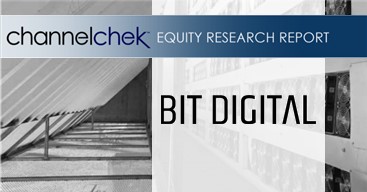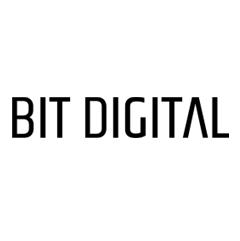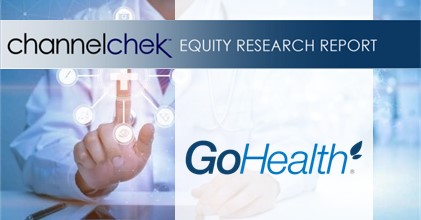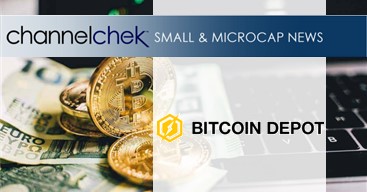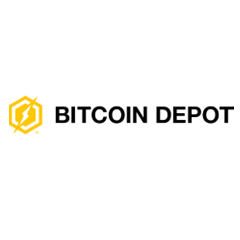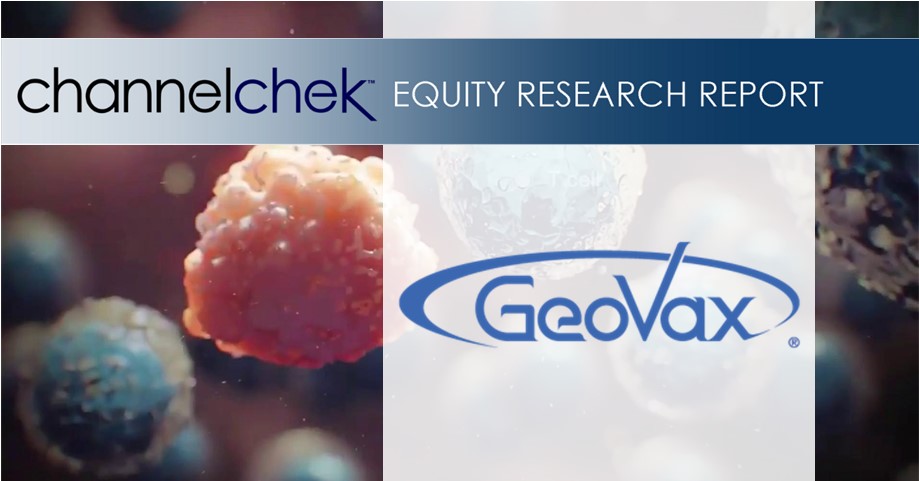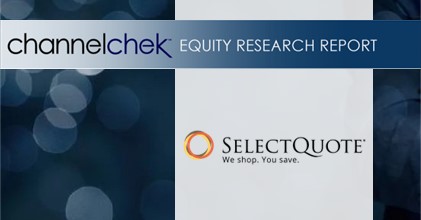Research News and Market Data on GOCO
Mar 14, 2024 at 6:00 AM EDT
CHICAGO, March 14, 2024 (GLOBE NEWSWIRE) — GoHealth, Inc. (NASDAQ: GOCO) (“GoHealth” or the “Company”), a leading health insurance marketplace and Medicare-focused digital health company, today announced unaudited financial results for the fourth quarter and year ended December 31, 2023.
- The Company generated $109.1 million of cash flow from operations in 2023, a substantial 79.2% improvement compared to $60.9 million in the prior year period.
- The percentage of revenue earned from non-agency sales in the fourth quarter was 60% of Medicare revenue, compared to 26% in 2022. This shift to non-agency operating model continues to drive cash generation.
- Fourth quarter 2023 net revenues were $276.7 million, compared to $69.4 million in the prior year period. Full year 2023 net revenues were $734.7 million, compared to $631.7 million in 2022.
- Fourth quarter 2023 net loss was $2.3 million and Adjusted EBITDA1 was $57.0 million, improvements of 98.5% and 160.1%, respectively, compared to the prior year period. Full year 2023 net loss of $151.3 million and Adjusted EBITDA1 of $75.1 million were improvements of 59.8% and 157.9%, respectively, compared to the prior year period.
- As a result of the improved performance of the Company and focus on higher quality submissions, there was no Lookback adjustment recorded in 2023. The Company recorded lookback adjustments in 2022 that are detailed in the tables below.
- GoHealth assisted over two million Medicare consumers assess their benefit options in 2023.
“As we reflect on our achievements this past year, our consumer-centric focus shifted from enrollment to engagement, with trust at its core. Our innovative PlanFit CheckUp program is a prime example of our commitment to the consumer and a driver of our 2023 results. By prioritizing the real needs of Medicare consumers, we continue to enhance consumer trust and set a new standard for industry practices, said Vijay Kotte, CEO of GoHealth. “Our approach underscores our mission to transform the consumer healthcare journey, ensuring every action we take is aligned with our core values of transparency, trust, and integrity,” continued Kotte.
“In 2023, GoHealth did right by the consumer while staying true to our values as a company and effectively managing our cash. Our results showcase a meaningful year over year increase in profitability and significant improvement in our operating cash flow, highlighting the effectiveness of our strategic initiatives and the unwavering commitment of our team,” said Jason Schulz, CFO of GoHealth.
(1) Adjusted EBITDA is a non-GAAP measure. For a definition of Adjusted EBITDA and a reconciliation to the most comparable GAAP measure, please see below.
Conference Call Details
The Company will host a conference call today, Thursday, March 14, 2024 at 8:00 a.m. (ET) to discuss its financial results. Participants can pre-register for the conference call at the following link: Webcast Pre-registration. A live audio webcast of the conference call will be available via GoHealth’s Investor Relations website, https://investors.gohealth.com/. A replay of the call will be available via webcast for on-demand listening shortly after the completion of the call.
About GoHealth, Inc.:
GoHealth is a leading health insurance marketplace and Medicare-focused digital health company whose purpose is to compassionately ensure consumers’ peace of mind when making healthcare decisions so they can focus on living life. For many of these consumers, enrolling in a health insurance plan is confusing and difficult, and seemingly small differences between health plans may lead to significant out-of-pocket costs or lack of access to critical providers and medicines. GoHealth’s proprietary technology platform leverages modern machine-learning algorithms, powered by over two decades of insurance purchasing behavior, to reimagine the process of matching a health plan to a consumer’s specific needs. Its unbiased, technology-driven marketplace coupled with highly skilled licensed agents has facilitated the enrollment of millions of consumers in Medicare plans since GoHealth’s inception. For more information, visit https://www.gohealth.com.
Investor Relations:
John Shave
JShave@gohealth.com
Media Relations:
Pressinquiries@gohealth.com
Forward-Looking Statements
This press release contains forward-looking statements within the meaning of Section 27A of the Securities Act of 1933, as amended and Section 21E of the Securities Exchange Act of 1934, as amended. These forward-looking statements are made in reliance upon the safe harbor provision of the Private Securities Litigation Reform Act of 1995. All statements other than statements of historical facts contained in this press release may be forward-looking statements. Statements regarding our future results of operations and financial position, business strategy and plans and objectives of management for future operations, including, among others, statements regarding our expected growth, future capital expenditures and debt service obligations are forward-looking statements.
In some cases, you can identify forward-looking statements by terms, such as “may,” “will,” “should,” “aim,” “expects,” “plans,” “anticipates,” “could,” “intends,” “targets,” “projects,” “contemplates,” “believes,” “estimates,” “predicts,” “potential,” “likely,” “strive”, “future,” or “continue” or the negative of these terms or other similar expressions. The forward-looking statements in this press release are only predictions, projections and other statements about future events that are based on current expectations and assumptions. Accordingly, we caution you that any such forward-looking statements are not guarantees of future performance and are subject to risks, assumptions and uncertainties that are difficult to predict. Although we believe that the expectations reflected in these forward-looking statements are reasonable as of the date made, actual results may prove to be materially different from the results expressed or implied by the forward-looking statements.
These forward-looking statements speak only as of the date of this press release and are subject to a number of important factors that could cause actual results to differ materially from those in the forward-looking statements, including, but not limited to the following: the marketing and sale of Medicare plans are subject to numerous, complex and frequently changing laws, regulations and guidelines; our operating results have been, and may continue to be, adversely impacted by factors that impact our estimate of LTV (as defined below); our gradual expansion of the Encompass Solution may not be as successful as we expect; our business may be harmed if we lose our relationships with health plan partners or if our relationships with health plan partners change; health plan partners may reduce the commissions paid to us and change their underwriting practices in ways that reduce the number of, or impact the renewal or approval rates of, insurance policies sold through our platform; we currently depend on a small group of health plan partners for a substantial portion of our revenue and losing our relationships with any of these health plan partners may disproportionately impact our financial position and performance; changes and developments in the health insurance system and laws and regulations governing the health insurance markets in the United States could materially adversely affect our business, operating results, financial condition and qualified prospects; we rely on certain services from the Centers for Medicare & Medicaid Services, and a federal government shutdown that impedes our ability to use these services may materially impact our business; information technology system failures could interrupt our operations; volatility in general economic conditions, including inflation, interest rates, and commodity prices and exchange rates may impact our financial position and performance; we may lose key employees or fail to attract qualified employees; our failure to grow our customer base or retain our existing customers; we may not realize the benefits we expect from our strategic cash flow optimization and other cash management initiatives; our ability to sell Medicare-related health insurance plans is largely dependent on our licensed health insurance agents; operating and growing our business may require additional capital; and the Founders and Centerbridge have significant influence over us, including control over decisions that require the approval of stockholders.
The foregoing factors should not be construed as exhaustive and should be read together with the other cautionary statements included in this press release, as well as the cautionary statements and other risk factors set forth in the Company’s 2022 Annual Report on Form 10-K, Quarterly Report on Form 10-Q for the first quarter ended March 31, 2023, Quarterly Report on Form 10-Q for the second quarter ended June 30, 2023, Quarterly Report on Form 10-Q for the third quarter ended September 30, 2023, the forthcoming 2023 Annual Report on Form 10-K and other SEC filings. If one or more events related to these or other risks or uncertainties materialize, or our underlying assumptions prove to be incorrect, actual results may differ materially from what we anticipate. Many of the important factors that will determine these results are beyond our ability to control or predict. Accordingly, you should not place undue reliance on any such forward-looking statements. Any forward-looking statement speaks only as of the date on which it is made, and, except as otherwise required by law, we do not undertake any obligation to publicly update or review any forward-looking statement, whether as a result of new information, future developments or otherwise. New factors emerge from time to time, and it is not possible for us to predict which will arise. In addition, we cannot assess the impact of each factor on our business or the extent to which any factor, or combination of factors, may cause actual results to differ materially from those contained in any forward-looking statements.
Use of Non-GAAP Financial Measures and Key Performance Indicators
In this press release, we use supplemental measures of our performance that are derived from our consolidated financial information, but which are not presented in our Consolidated Financial Statements prepared in accordance with GAAP. These non-GAAP financial measures include net income (loss) before interest expense, income tax (benefit) expense and depreciation and amortization expense, or EBITDA; Adjusted EBITDA; Adjusted EBITDA margin; Sales per Submission; Cost per Submission and Adjusted Gross Margin per Submission. Adjusted EBITDA is the primary financial performance measure used by management to evaluate the business and monitor its results of operations. Sales per Submission, Cost per Submission and Adjusted Gross Margin per Submission are key operating metrics used by management to understand the Company’s underlying financial performance and trends.
Additional non-GAAP financial measures, including net revenue excluding the Lookback Adjustments, Adjusted EBITDA excluding the Lookback Adjustments, net revenue excluding both the Non-Encompass BPO Services revenue and the Lookback Adjustments and Adjusted EBITDA excluding both the Non-Encompass BPO Services gross margin and the Lookback Adjustments, are also discussed in this press release. The Lookback Adjustments are revenue adjustments that represent changes in estimates relating to performance obligations satisfied in prior periods and relate to the fiscal years 2021 and prior.
Adjusted EBITDA represents, as applicable for the period, EBITDA as further adjusted for certain items summarized below in this press release. Adjusted EBITDA margin represents Adjusted EBITDA divided by net revenues. Sales per Submission represents Medicare Revenue per Submission as further adjusted for certain items summarized below in this press release. Cost per Submission represents Operating Expense per Submission as further adjusted for certain items summarized below in this press release. Adjusted Gross Margin represents Sales per Submission less Cost per Submission.
We use non-GAAP financial measures to supplement financial information presented on a GAAP basis. We believe that excluding certain items from our GAAP results allows management to better understand our consolidated financial performance from period to period and better project our future consolidated financial performance as forecasts are developed at a level of detail different from that used to prepare GAAP-based financial measures. Moreover, we believe these non-GAAP financial measures provide our stakeholders with useful information to help them evaluate our operating results by facilitating an enhanced understanding of our operating performance and enabling them to make more meaningful period to period comparisons. Adjusted EBITDA is used as a basis for certain compensation programs sponsored by the Company. There are limitations to the use of the non-GAAP financial measures presented in this press release. For example, our non-GAAP financial measures may not be comparable to similarly titled measures of other companies. Other companies, including companies in our industry, may calculate non-GAAP financial measures differently than we do, limiting the usefulness of those measures for comparative purposes.
The non-GAAP financial measures are not meant to be considered as indicators of performance in isolation from or as a substitute for the most directly comparable measures prepared in accordance with GAAP, and should be read only in conjunction with financial information presented on a GAAP basis. Reconciliations of each of EBITDA, Adjusted EBITDA, net revenue excluding the Lookback Adjustments, Adjusted EBITDA excluding the Lookback Adjustments, net revenue excluding both the Non-Encompass BPO Services revenue and the Lookback Adjustments, Adjusted EBITDA excluding both the Non-Encompass BPO Services gross margin and the Lookback Adjustments, Sales per Submission, Cost per Submission and Adjusted Gross Margin per Submission to its most directly comparable GAAP financial measure, are presented in the tables below in this press release. We encourage you to review the reconciliations in conjunction with the presentation of the non-GAAP financial measures for each of the periods presented. In future periods, we may exclude similar items, may incur income and expenses similar to these excluded items and include other expenses, costs and non-recurring items.
The Company is unable to provide a full reconciliation of guidance for Adjusted EBITDA without unreasonable effort because it is not possible to predict certain adjustment items with a reasonable degree of certainty since they are not yet known or quantifiable, and do not relate to the Company’s routine activities. This information is dependent upon future events, which may be outside of the Company’s control and could have a significant impact on its GAAP financial results for fiscal year 2023.
Glossary
- “Adjusted EBITDA” represents, as applicable for the period, EBITDA as further adjusted for certain items summarized below in this press release.
- “Adjusted EBITDA Margin” refers to Adjusted EBITDA divided by net revenues.
- “Adjusted Gross Margin per Submission” refers to Sales per Submission less Cost per Submission.
- “Cash Adjusted EBITDA” refers to Adjusted EBITDA plus a decrease or less an increase in the year over year change in our net contract asset.
- “Cost of Submission” refers to the aggregate cost to convert prospects into Submissions during a particular period. Cost of Submission is comprised of revenue share, marketing and advertising expenses and customer care and enrollment expenses, excluding share-based compensation expense, the impact of revenue adjustments recorded in the period, but relating to performance obligations satisfied in prior periods and such expenses related to Non-Encompass BPO Services.
- “Cost per Submission” refers to (x) the aggregate cost to convert prospects into Submissions for a particular period (comprised of revenue share, marketing and advertising expenses, and customer care and enrollment expenses, excluding share-based compensation expense and such expenses related to Non-Encompass BPO Services) divided by (y) number of Submissions.
- “EBITDA” represents net income (loss) before interest expense, income tax expense (benefit) and depreciation and amortization expense.
- “Gross margin” refers to net revenue divided by revenue share, marketing and advertising expenses and customer care and enrollment expenses.
- “Lookback Adjustment” refers to negative revenue adjustments that represent changes in estimates relating to performance obligations satisfied in prior periods
- “LTV” refers to the Lifetime Value of Commissions, which we define as aggregate commissions estimated to be collected over the estimated life of all commissionable Submissions for the relevant period based on multiple factors, including but not limited to, contracted commission rates, health plan partner mix and expected policy persistency with applied constraints.
- “Non-Encompass BPO Services” refer to programs in which GoHealth-employed agents are dedicated to certain health plan partners and agencies we partner with outside of the Encompass operating model.
- “Sales per Submission” refers to (x) the sum of (i) aggregate commissions estimated to be collected over the estimated life of all commissionable Submissions for the relevant period based on multiple factors, including but not limited to, contracted commission rates, health plan partner mix and expected policy persistency with applied constraints, excluding revenue adjustments recorded in the period, but relating to performance obligations satisfied in prior periods, (ii) non-agency revenue, and (iii) partner marketing and other revenue, divided by (y) the number of Submissions for such period.
- “Sales/Cost of Submission” refers to (x) the sum of (i) aggregate commissions estimated to be collected over the estimated life of all commissionable Submissions for the relevant period based on multiple factors, including but not limited to, contracted commission rates, health plan partner mix and expected policy persistency with applied constraints, excluding revenue adjustments recorded in the period, but relating to performance obligations satisfied in prior periods, (ii) non-agency revenue and (iii) partner marketing and other revenue, divided by (y) the aggregate cost to convert prospects into Submissions (comprised of revenue share, marketing and advertising expenses, and customer care and enrollment expenses, excluding share-based compensation expense) for such period. Sales/Cost of Submission exclude amounts related to Non-Encompass BPO Services.
- “Submission” refers to either (i) a completed application with our licensed agent that is submitted to the health plan partner and subsequently approved by the health plan partner during the indicated period, excluding applications through our Non-Encompass BPO Services or (ii) a transfer by our agent to the health plan partner through the Encompass operating model during the indicated period.
View full release here.
Source: GoHealth, Inc.

